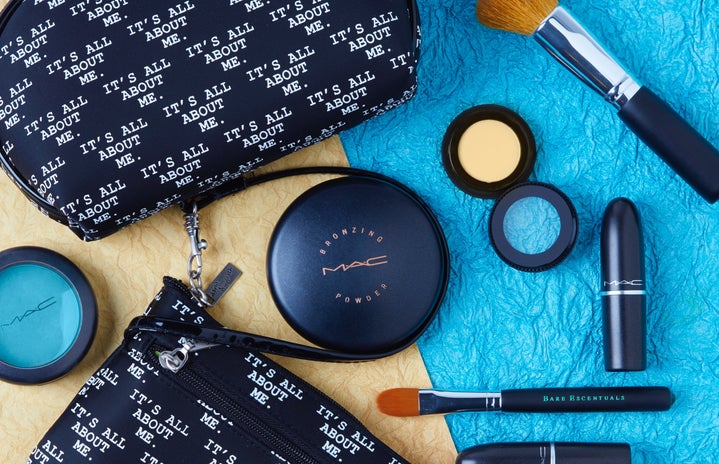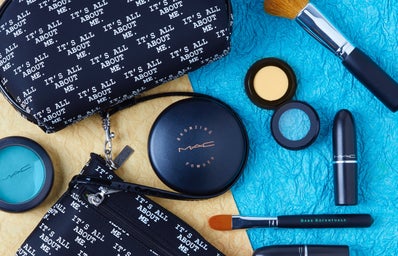Blusher has a bad reputation. A lot of people avoid using it because they’re worried it will make them look like a clown, or like their walk to lectures was a really intense workout. However, with the right shade and application it can add so much to the face, especially if you’re in the habit of using a tinted moisturiser or foundation that can make your face look a little flat.
The most popular – and flattering – shades are corals and warm pinks.
- No7 Pop & Glow Cream Blush Stick in Sorbet £9.95 cute, dewy finish
- MAC Cremeblend Blush in Ladyblush £18 this is my most-used blusher
- Benefit Box o’ Powder in Dandelion £23.50 this one’s literally impossible to overdo
- NARS Matte Multiple in Exumas £30 available from April
If you find that those shades don’t suit you, try a cool-toned blusher. People who suit cool tones usually include those who have pale skin and dark hair – if in doubt, most of the employees in Space NK or the beauty departments of Debenhams and House of Fraser should be able to help you work it out.
- NARS Angelika £22.50 NARS blushes are an industry favourite
- Bourjois Powder Blush in Rose d’Or £7.99 this one’s been around for 150 years
- Maybelline Dream Bouncy Blush in Fresh Pink £6.49 cheap as chips! and bouncy!
- MAC Cremeblend Blush in So Sweet, So Easy £18 seriously, who thinks of these names?
Those with darker skin can sometimes have a hard time finding blushes that are pigmented enough to show up on their cheeks. Here are a few of my picks:
- MAC Powder Blush in Dollymix £18 pigmented, but sheer at the same time
- Estee Lauder Pure Colour Cheek Rush in Pink Patent £24 an almost neon gel
- Soap and Glory Cheekmate £8 this is a “gel stain”
- Illamasqua Cream Blush in Seduce £18 Illamasqua are famous for their pigmented products
It’s mostly down to personal preference whether you choose a cream (or liquid) blush or a powder. You can apply cream blushers with either your fingers or a brush – pick one with a flat top – and they work well on bare skin as well as over tinted moisturiser or foundation. On a warm day, you might like to set your cream blush with a setting powder to increase the wear time. Liquid and gel blushes usually wear for a long time.
Powder blushes ought to be applied using a brush (though I have been known to apply mine with my fingers – rules are made to be broken, right?) Fluffy, soft blushes are best for more pigmented blushers, particularly bright colours or loose powder blushers, as they pick up less powder, making it harder to over-apply. You don’t need an expensive brush though. Mine is John Lewis own and cost about £8 and Boots does a good one for £7.
You may have read advice telling you to smile, then apply blush to the apples of your cheeks. The problem with this technique is that once you stop smiling, your cheeks drop and the blush is sitting lower on your face, making it look droopy. This can be ageing and can also contribute to clown face. If you do smile when applying your blush, make sure you apply it ever so slightly higher that you normally would, and use your fingers or a brush to blend the colour outwards towards your cheekbones. This is my personal favourite way to apply blush, as demonstrated with one of those face charts they give you at MAC counters.
However you apply your blush, the key is to blend, then blend some more. And remember, it’s easier to add more colour than to take it off. Happy blushing!

